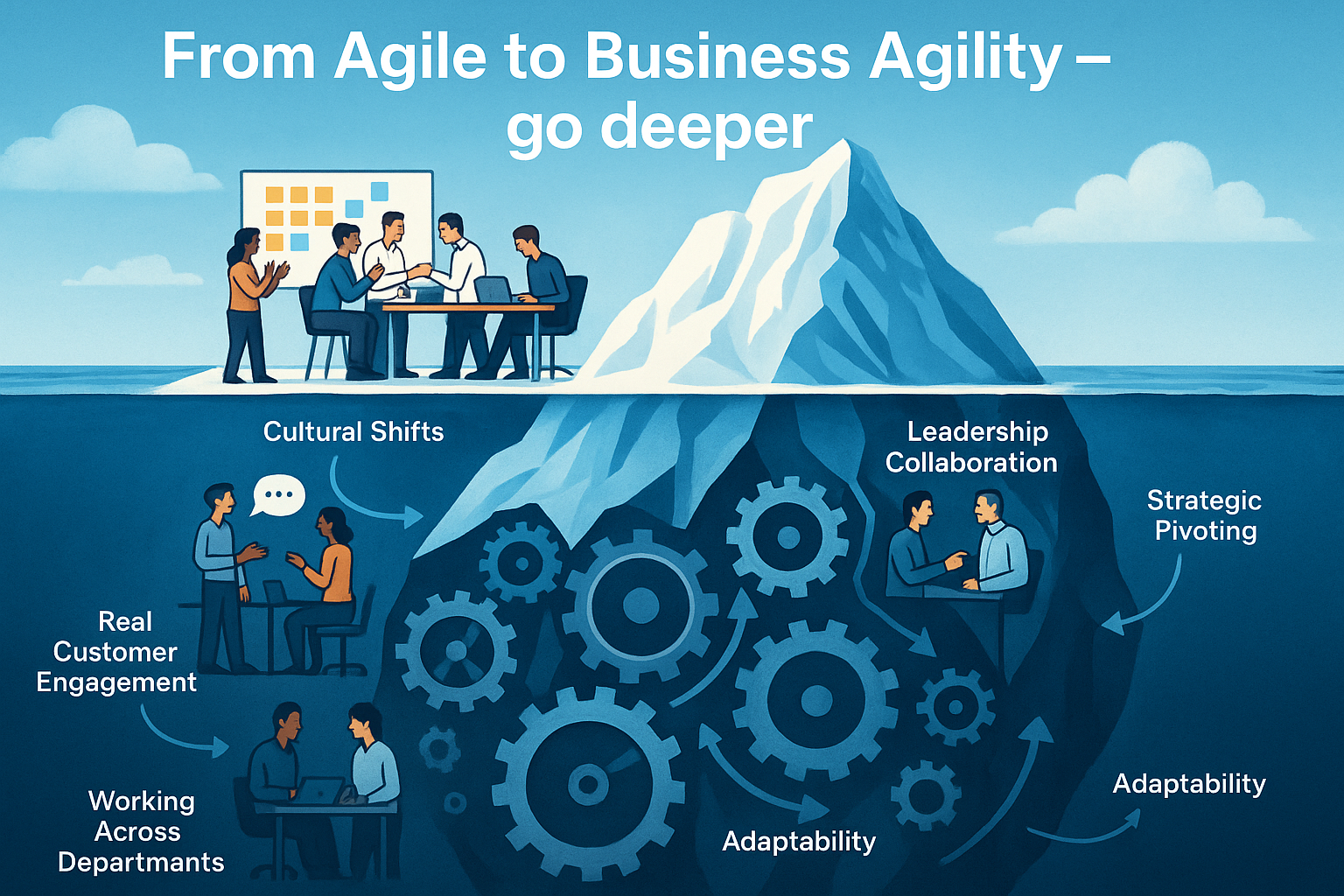
In a startup, where the pace of work is fast and responsibilities are often blurred, clearly defining roles and responsibilities is essential. The RACI matrix is an effective tool for clarifying who does what and ensuring that everyone is aligned. Next, we will see how to create a RACI matrix that works perfectly for your startup.
What is the RACI matrix and why is it crucial in a startup?
In a startup, where teams tend to be small and responsibilities often overlap, clarifying responsibilities becomes a vital resource to avoid confusion and maximize efficiency. The RACI matrix is a tool that clarifies the roles and responsibilities of a team, ensuring that everyone knows who should do what.
Definition and concept of the RACI matrix
The RACI matrix defines four levels of responsibility that are assigned to each task or activity in a project:
- Responsible (R): This person is in charge of getting the job done. Each task should have a single responsible person to maintain clarity. If there are several responsible persons, there may be confusion.
- Accountable (A): The final decision maker who has the authority to approve or reject the results of the task. The translation of Accountable could be similar to ultimately responsible, the person who will be held accountable for the task. There should only be one ultimate accountable person to avoid confusion.
- Consulted (C): Persons who should be consulted, since they have relevant information for decision making, although they do not make the final decision. There may be several of them and they should have sufficient knowledge to give their opinion on the matter. To identify them, consider who is the subject matter expert and who will be affected by the task.
- Informed (I): These are people who need to be kept abreast of progress, although they are not directly involved in decision making or task execution.
How the RACI matrix helps to organize roles and responsibilities
One of the main reasons why the RACI matrix is crucial in a startup is because it avoids ambiguity. In the high-pressure context of a startup, it is easy for responsibilities to overlap or critical tasks to be forgotten. The RACI matrix ensures that:
- Each task has a clear person in charge, preventing tasks from being left undone.
- The approval process is transparent, ensuring that decisions are made in a timely manner and that there are no delays in implementation.
- All key stakeholders are adequately involved.
How to create a RACI matrix step by step
One of the factors to take into account when creating a RACI matrix is to focus the assignment of responsibilities on the value stream. This encompasses all activities that generate value for the customer, from product conception to final delivery. Defining responsibilities within this flow allows for better alignment of the team and ensures that each task contributes directly to the end result.
In a startup, tasks and responsibilities are focused on rapid creation of minimum viable products (MVP), constant validation with customers and rapid iteration based on learning. Creating a RACI matrix involves following a systematic process to clearly assign responsibilities for each role in the main activities of the value stream.
Steps to create a RACI matrix
- Identify key activities: Start by listing all the steps in the flow and the essential activities that are part of each step in the value stream.
- Define the existing roles in the startup: Identify all the roles that exist in the team. In a small startup, some roles may be performed by the same person due to limited staff.
- Build the RACI matrix for your value stream: After defining the roles and having identified the activities, it is time to build the RACI matrix in a visual format. This way it is clearly represented what role each person or team plays in each activity.
- Review and adapt the RACI matrix as the value stream or team evolves: A startup’s value stream can change rapidly as the product evolves and the team grows. Therefore, it is essential to review the RACI matrix periodically to ensure that it remains aligned with business priorities.

Tips and resources for implementing the RACI matrix in a startup
Since startups often have small and dynamic teams, it is important to adopt a flexible and strategic approach when using this tool.
Involves all team members
It is crucial that all team members participate in the creation of the RACI matrix. Each person must clearly understand what his or her role is and how his or her responsibilities align with those of others. This not only improves transparency, but also promotes a sense of ownership and commitment to each task. In addition, encouraging team participation helps identify potential areas for improvement or roles that may have been overlooked.
Keep the matrix simple and clear
One of the most common mistakes when implementing the RACI matrix is to make it too complex. To avoid this, keep the matrix as simple as possible, with a clear assignment of roles and responsibilities. If a task does not require all roles, there is no need to force the assignment of each role. The clearer and more straightforward the matrix is, the easier it will be for the team to use and refer to it effectively.
Encourages open communication
Although the RACI matrix is a powerful tool for defining roles, it cannot replace the importance of open and effective communication among team members. It is essential that everyone knows that, even if their role is clearly defined in the matrix, they can always communicate with each other to resolve questions or clarify responsibilities. The RACI matrix should complement, not replace, the dialogue between teams.
Considers degrees of delegation between Accountable and Responsible
Depending on the task or context, the Accountable may delegate more or less responsibility to the team. This means that, depending on the maturity of the team, the team may have complete autonomy for decision making. Adjusting the degrees of delegation improves efficiency and enhances team self-management, allowing teams to act more independently.
The delegation levels of Management 3.0 can be used as a guide in this section.
Leaves room for flexibility between roles
Although the RACI matrix is an excellent tool for defining responsibilities, in a startup, where roles and tasks can evolve rapidly, it is important to maintain some flexibility. Not all responsibilities should be strictly delineated. Leaving boundaries between roles open can allow team members to collaborate and support tasks outside their scope when needed. This fosters adaptability, facilitates problem solving and allows the team to respond nimbly to unforeseen changes or new opportunities.
Example of RACI matrix in a technology startup
- Identify key activities: These are the flow steps and their key activities in our example:
- Definition of the problem hypothesis:
- Identification of the main problem to be solved.
- Market research to validate the existence of the problem.
- Competitor analysis and current solutions.
- Definition of the unique value proposition.
- Creation of a user or target customer profile.
- Documentation of the initial hypothesis of the problem.
- MVP development:
- Definition of the key functionalities of the MVP.
- Initial UX/UI design and prototyping.
- Development of the backend and frontend of the product.
- Configuration of the technological infrastructure.
- Integration of basic functionalities.
- Internal functionality and usability tests.
- Adjustments and corrections based on initial testing.
- Implementation of measurement and analytical tools.
- Customer testing and feedback:
- Planning of test sessions with real users.
- Collection of qualitative and quantitative feedback from users.
- Analysis of test results.
- Identification of improvements and adjustments needed in the MVP.
- Implementation of changes based on user feedback.
- Documentation of learning and areas of opportunity.
- Measurement and learning:
- Definition of key metrics (KPIs) to evaluate the success of the product.
- Implementation of tracking and data collection systems.
- Data analysis to validate the initial hypothesis.
- Identification of user patterns and behavior.
- Review of metrics against established objectives.
- Adjustment of the product strategy based on the learnings.
- Product scaling:
- Planning of improvements and new product functionalities.
- Optimization of the product to support a greater number of users.
- Scaling of the technological infrastructure.
- Marketing strategies to attract new users.
- Expansion of the development and technical support team.
- Continuous performance evaluation and adjustments according to new demands.
- Establishment of processes for managing a higher volume of users.
- Definition of the problem hypothesis:
- Define the existing roles in the startup: For our example, the roles are:
- The CEO leads the overall vision and strategy, ensuring that the team is aligned with the product mission.
- The CTO focuses on the technical side, ensuring that the product is developed correctly and is scalable.
- The Development Team implements and adjusts the product according to the specifications and feedback received.
- The UX/UI Designer ensures that the product not only works, but is easy and enjoyable to use.
- The Marketer is in charge of connecting the product with the market, validating hypotheses and ensuring user growth.
- Build the RACI matrix for your value stream: With the roles and activities already located, we create a table with the responsibilities. Here is an example of how it could be structured:





